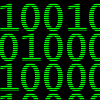Today I want to talk about some architectural decisions that I made in the early stages of development that I hope will help to minimize the memory and battery consumption of my app.
First, let's discuss how I intended for my app to receive input. I do plan on having to interface directly with the user, so I'll be implementing a few activities. I also have a couple of BroadcastReceivers that I have added to my app's manifest in order to receive certain broadcast intents from the OS.
It very quickly became clear that I was going to want to implement a service to do my app's heavy lifting. Since my BroadcastReceiver was going to need to send intents over to the service via Context.startService(), I settled on using an IntentService so that my service would automatically stop itself when there were no more pending intents.
I also decided that it was going to be necessary for my service to communicate back to my activities. I decided that my activities will use Context.bindService() to facilitate this bi-directional communication. On the other hand, I don't want the service to be bound any longer than it reasonably needs to be.
Observe this snippet from the Android documentation on the service lifecycle:
A service can be both started and have connections bound to it. In such a case, the system will keep the service running as long as either it is started or there are one or more connections to it with the Context.BIND_AUTO_CREATE flag. Once neither of these situations hold, the service's onDestroy() method is called and the service is effectively terminated.
This information is important because it clarifies what happens if an IntentService tries to stop itself while the service is still bound: The service won't be destroyed until any connections are unbound.
After digesting all of this for a few moments, I came to the following conclusions:
- My service will be implemented as an IntentService and it will process start intents sent by my activities and broadcast receivers. Unless any connections are bound to it, the service will stop itself as soon as it has processed all the intents in its queue.
- My service will also support having connections bound to it. My activities will bind in order to achieve bi-directional communication with my service. Because of the guarantees made in the Android service lifecycle documentation, the IntentService implementation can't "pull the rug out" from under bound connections.
- I will under no circumstances bind anything to the service unless the communication is essential to the functioning of my app. In other words, I'm not going to bind to the service and leave it running "just in case." In the case of my main activity, this means that I'll bind to the service in Activity.onStart() and unbind in Activity.onStop(); if the activity isn't visible and there aren't any start intents pending, then my service doesn't need to be consuming resources.
- To compensate for the fact that the service is unlikely to be running continuously, I ensure that my activities send a refresh command to the service when they become visible. This gives the service an opportunity to update the activity as necessary to ensure that the UI is consistent with the service's internal state.

